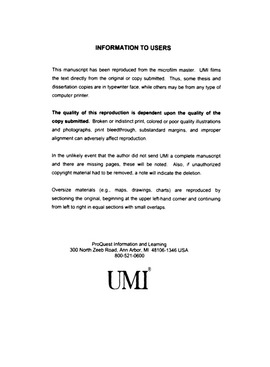| dc.contributor.advisor | Droegemeier, Kelvin K., | en_US |
| dc.contributor.author | Nascimento, Ernani De Lima. | en_US |
| dc.date.accessioned | 2013-08-16T12:18:48Z | |
| dc.date.available | 2013-08-16T12:18:48Z | |
| dc.date.issued | 2002 | en_US |
| dc.identifier.uri | https://hdl.handle.net/11244/525 | |
| dc.description.abstract | While the large-scale atmosphere is governed by relatively simple dynamic balance relations that describe the mutual adjustment between the mass and wind fields (e.g., hydrostatic and geostrophic balances), no simple relation is known to govern flow adjustments on the convective scale. To gain better insight into this issue, a set of identical-twin numerical experiments are performed in the present work. A control simulation of an idealized long-lived bow echo, which serves as "truth", is compared against forecasts in which selected variables in the control run are reset to their undisturbed base state values during the mature stage of the convective system. The goal is to understand how, and at what rates, the unperturbed meteorological fields adjust to the variable that is withdrawn impulsively (and vice versa). | en_US |
| dc.description.abstract | These results suggest that if a choice exists regarding which variables can be specified in a stormscale model in the presence of a mature convective system (particularly, squall lines and bow echoes), the horizontal wind, water vapor and condensate species should be given the highest priority. On the other hand, information contained in the pressure, temperature and vertical motion fields tend to be redundant. | en_US |
| dc.description.abstract | Our results indicate that withdrawal of the perturbation horizontal wind field has a major impact on storm morphology, while elimination of the vertical motion has virtually no impact. This behavior can be explained by the response of the pressure field to incomplete specification of the three-dimensional divergence, associated with which is the creation of high-amplitude mixed acoustic-gravity waves. A strong squall line, sharing many of the characteristics of bow echoes, results from the simulation in which perturbation potential temperature is withheld, with the water vapor and condensate fields regenerating the main thermal structure of the convective system through diabatic effects. Withdrawal of perturbation water vapor mixing ratio leads to a storm system whose evolution deviates significantly from the control simulation, owing to a delay in the restoration of the thermal field and to substantial modification in rates of latent heating and cooling. | en_US |
| dc.format.extent | xxix, 301 leaves : | en_US |
| dc.subject | Convection (Meteorology) | en_US |
| dc.subject | Physics, Atmospheric Science. | en_US |
| dc.subject | Weather forecasting. | en_US |
| dc.subject | Geophysics. | en_US |
| dc.subject | Storms. | en_US |
| dc.title | Dynamic adjustment in an idealized numerically-simulated bow echo. | en_US |
| dc.type | Thesis | en_US |
| dc.thesis.degree | Ph.D. | en_US |
| dc.thesis.degreeDiscipline | School of Meteorology | en_US |
| dc.note | Source: Dissertation Abstracts International, Volume: 63-11, Section: B, page: 5293. | en_US |
| dc.note | Major Professor: Kelvin K. Droegemeier. | en_US |
| ou.identifier | (UMI)AAI3070630 | en_US |
| ou.group | College of Atmospheric & Geographic Sciences::School of Meteorology | |
